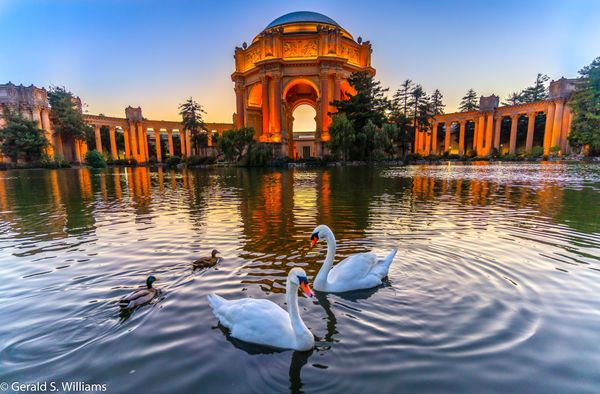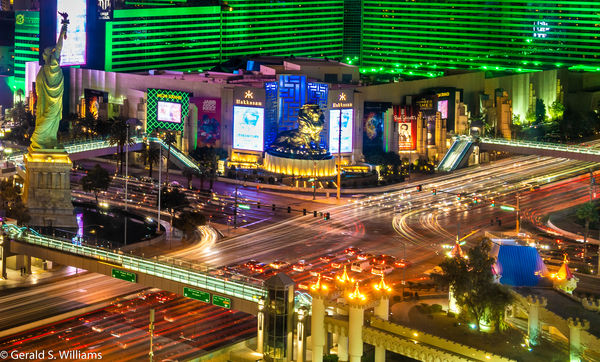Need help making a decision between 2 lenses
Aug 17, 2020 13:14:33 #
I am interested in purchasing a wide-angle zoom lens for landscape and astro work. I currently own Sony’s 24-70 f2.8 GM and then 70-300 and upward. I am trying to make a choice between Sony’s 12-24 f2.8 ($3000) and 16-35 f2.8 ($2100). Both are G Master lenses with great reviews. The weight difference is insignificant. The only other difference is the 12-24 has a bulbous front element and a permanent lens hood. No filter availability on the front of that lens. So my question to all the wide-angle shooters out there is – is the 4mm difference worth the $900 extra cost? I will appreciate all of your thoughts. Thanks.
Aug 17, 2020 13:47:50 #
azted
Loc: Las Vegas, NV.
I don't know astro, but for landscape work you will want the availability of Polarizing lenses. It is far easier to attach one to the 16-35 mm lens. The other lens might be useful if you are doing real estate photography.
Aug 17, 2020 14:01:34 #
I am a Professional Sony user and have 13 E-mount lens for my A7RIV and A9, from Sony, Sigma and Tamron. I have four GM lens among them. I looked at both the Sony 12-24mm f2.8 GM and the Sigma Art 14-24mm f2.8 lenses. Both have equally superb image quality. But both also have that bulbous front element. They have rear filter holders,but those filters are hard to find or you have to cut them out yourself and you wont be able to use a circular polarizer or variable Nd filter in those rear filter holders. Fotodiox and other make large front filter holders and filters for bulbous front-element lenses, but they are a hassle to use and carry along in your camera bag.
So I chose instead to get the Tamron 17-28mm f2.8 lens in E-mount and love it, and it takes conventional filters as it has a normal front element, as does the 16-35mm f2.8 GM.
So my recommendation is get either the superb 16-35mm f2.8 GM or the Tamron 17-28mm f2.8 lens. The GM is a bit better in overall sharpness, but the Tamron is excellent also. Here is a shot I made on my A7RIV and Tamron 17-28mm f2.8 lens at the Palace of Fine Arts in San Francisco, California, back in March 2020 at sunset/dusk shooting at 17mm, ISO 400. If you can afford the 16-35mm GM get the GM IMHO.
If you don't ever use filters then you can get the 12-24mm f2.8 GM and yes the difference in coverage is noticeable between 12mm and 16mm.
So I chose instead to get the Tamron 17-28mm f2.8 lens in E-mount and love it, and it takes conventional filters as it has a normal front element, as does the 16-35mm f2.8 GM.
So my recommendation is get either the superb 16-35mm f2.8 GM or the Tamron 17-28mm f2.8 lens. The GM is a bit better in overall sharpness, but the Tamron is excellent also. Here is a shot I made on my A7RIV and Tamron 17-28mm f2.8 lens at the Palace of Fine Arts in San Francisco, California, back in March 2020 at sunset/dusk shooting at 17mm, ISO 400. If you can afford the 16-35mm GM get the GM IMHO.
If you don't ever use filters then you can get the 12-24mm f2.8 GM and yes the difference in coverage is noticeable between 12mm and 16mm.
Aug 17, 2020 15:23:16 #
larryepage
Loc: North Texas area
dfrost01 wrote:
I am interested in purchasing a wide-angle zoom le... (show quote)
I cannot speak to Sony lenses, but I can provide two comments that might be helpful. First...for astrophotography, you will definitely appreciate the extra 4mm at the bottom of the 12-24mm zoom. I have both a 14-24mm zoom and a 18-35mm zoom, and even though it doesn't sound logical, when I've experimented with the longer lens for the night sky, it just isn't wide enough. Second...I would never consider using a polarizing filter on a lens this wide. No matter which direction you are aiming, the variance in the effect across the frame is just too distracting. While I do not prefer to use extreme wide angle lenses for landscapes most of the time, I've learned that there are other ways to achieve much the same effect, including reducing exposure a tad (relying on your camera's dynamic range) and boosting saturation a little bit. Either or both of these techniques allows me to produce better JPEGs or have a batter raw editing starting point.
For the night sky, you will also want to look carefully at distortions and aberrations. Depending on what you learn, you might choose to go with the longer lens and plan on doing more panoramas.
Aug 17, 2020 16:08:20 #
IMHO Circular polarizing filters and Variable Neutral Density filters are very important in my landscape shooting. For that reason I tend to shy away from bulbous front element lenses. The only one i have is my Canon 17mm f4 Tilt-shift lens that I use sometimes for commercial architecture shots, ith my MC-11 adapter on my Sony bodies. . For that lens I do have the huge Fotodiox front filter system and its huge CPL and VND filters, but they are a hassle to carry and use. I personally love my 24mm f1.4GM for astro shots. It has no sagital coma and that is a huge help. Yes often wider is better for astro, but lens quality matters here too. A single frame astro shot from famed Monument Valley, Navajo lands, Arizona/Utah border USA, showing the Milky Way and the space station as day breaks over the night sky. Day and night in a single exposure.
Sony A7RIV, Sony 24mm f1.4 GM lens, f1.4, ISO 200, 20 second single exposure. March 1, 2020.
Sony A7RIV, Sony 24mm f1.4 GM lens, f1.4, ISO 200, 20 second single exposure. March 1, 2020.
Aug 17, 2020 17:15:58 #
Another Tamron 17-28mm f2.8 E-mount lens shot. Horseshoe Bend and the Colorado River ,Navajo Lands, near Page, Arizona, USA. Sony A7RIV, Tamron 17-28mm f2.8 lens, 17mm, f8, ISO 100. Circular Polarizing Filter. This is an HDR image from five exposure-bracketed (in camera) images, merged in Lightroom.
Aug 17, 2020 17:24:41 #
Variable ND (neutral density) filters can also be very useful. Here a shot of part of the Las Vegas strip near the MGM Grand casino/resort. Sony A7RIV, Sigma Art 24-70mm f2.8 lens, 24mm, f8, ISO 50, 3 minute exposure. The K&F VND/CPL filter enabled me to have that 3 minute long time exposure to get the car trails.
Aug 17, 2020 18:33:19 #
azted wrote:
I don't know astro, but for landscape work you will want the availability of Polarizing lenses. It is far easier to attach one to the 16-35 mm lens. The other lens might be useful if you are doing real estate photography.
Great point. Thank you.
Aug 17, 2020 18:42:26 #
Aug 17, 2020 18:46:26 #
larryepage wrote:
I've learned that there are other ways to achieve... (show quote)
Thank you for the suggestion.
Aug 17, 2020 18:48:08 #
I have FX camera bodies and I have the 14-24/2.8 and the 24-70/2.8. I got the 14-24 for wide angle work probably a decade ago. I have no experience with the Sony 12-24 or 16-35.
The 14-24/2.8 is a great lens, but for me it doesn't get much use.
For one thing it's tough to fit into my bag, which is crammed with two bodies and 3 lenses and a speedlight and other miscellaneous stuff. The bulbous front end is inconvenient and although you can get filters onto it, they're basically large flat filters that need a special device to mount them to the lens.
I have found that for landscape use, stitching is a viable alternative. Landscapes are (for the most part) static so several exposures can be made before anything moves (although you need ghost reduction if there are leaves on trees in a wind). Of course that does not apply to dynamic scenes with people walking about. And astronomical shots could be done by stitching unless you're doing star trails.
The 14-24 is useful for special situations. For example I have used it for a wedding breakfast in a small venue and a group meeting also in a crowded room.
I should also note that I rarely use f/2.8. I find the DOF too narrow in most situations.
The 14-24/2.8 is a great lens, but for me it doesn't get much use.
For one thing it's tough to fit into my bag, which is crammed with two bodies and 3 lenses and a speedlight and other miscellaneous stuff. The bulbous front end is inconvenient and although you can get filters onto it, they're basically large flat filters that need a special device to mount them to the lens.
I have found that for landscape use, stitching is a viable alternative. Landscapes are (for the most part) static so several exposures can be made before anything moves (although you need ghost reduction if there are leaves on trees in a wind). Of course that does not apply to dynamic scenes with people walking about. And astronomical shots could be done by stitching unless you're doing star trails.
The 14-24 is useful for special situations. For example I have used it for a wedding breakfast in a small venue and a group meeting also in a crowded room.
I should also note that I rarely use f/2.8. I find the DOF too narrow in most situations.
Aug 17, 2020 18:49:49 #
Thanks everyone for your help. I think the ability to use a filter (whether it's polarizing or ND) will be important to me so I've decided to purchase the 16-35. And I save $900 that I can use for something else!
Aug 17, 2020 19:52:39 #
Just remember that a polarizing filter will be of limited utility on an ultrawide lens.
https://www.flickr.com/photos/photofarmer/1935047693
https://www.flickr.com/photos/photofarmer/1935047693
Aug 17, 2020 21:02:43 #
[quote=DirtFarmer]Just remember that a polarizing filter will be of limited utility on an ultrawide lens.
I understand. But I will probably want to use a graduated ND filter.
I understand. But I will probably want to use a graduated ND filter.
Aug 17, 2020 21:37:08 #
dfrost01 wrote:
GWilliams6 - Thank you for your advice. Your photos are beautiful.
You are most welcome.



If you want to reply, then register here. Registration is free and your account is created instantly, so you can post right away.




